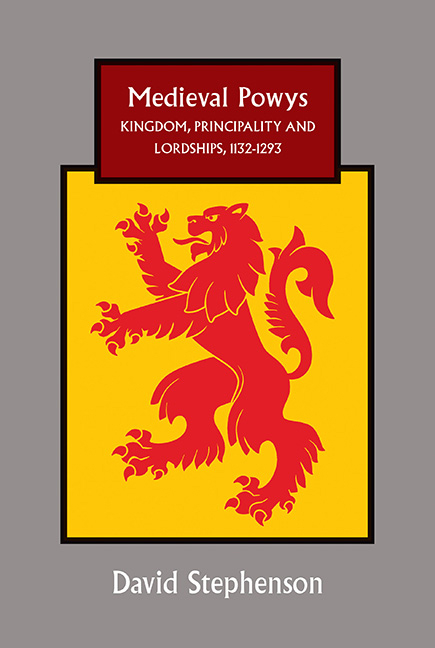Book contents
- Frontmatter
- Dedication
- Contents
- List of Illustrations
- Acknowledgements
- Abbreviations
- Map
- Miscellaneous Frontmatter
- Introduction: The problem of medieval Powys: historiography and sources
- Part I Powysian Polities in the Twelfth and Thirteenth Centuries: A Political Narrative
- Part II Characteristics of the Powysian Polities: Structures, Fault-Lines and Political Culture
- 9 Powysian polities I: aspects of governance
- 10 Powysian polities II: secular dynamics; fragmentation and integration
- 11 Powysian polities III: the ecclesiastical dimension
- 12 Some Powysian perspectives: fears and aspirations
- Appendices
- Select bibliography
- Index
- Miscellaneous Endmatter
12 - Some Powysian perspectives: fears and aspirations
from Part II - Characteristics of the Powysian Polities: Structures, Fault-Lines and Political Culture
Published online by Cambridge University Press: 29 April 2017
- Frontmatter
- Dedication
- Contents
- List of Illustrations
- Acknowledgements
- Abbreviations
- Map
- Miscellaneous Frontmatter
- Introduction: The problem of medieval Powys: historiography and sources
- Part I Powysian Polities in the Twelfth and Thirteenth Centuries: A Political Narrative
- Part II Characteristics of the Powysian Polities: Structures, Fault-Lines and Political Culture
- 9 Powysian polities I: aspects of governance
- 10 Powysian polities II: secular dynamics; fragmentation and integration
- 11 Powysian polities III: the ecclesiastical dimension
- 12 Some Powysian perspectives: fears and aspirations
- Appendices
- Select bibliography
- Index
- Miscellaneous Endmatter
Summary
Central amongst the factors that conditioned the political outlook of the upper echelons of Powysian society was their sense of political geography and of their historical and legendary environment. It is the object of the present chapter to probe the Powysians’ perceptions of their geopolitical neighbours, and their view of the place of Powys in Wales and the marchland. In the late eleventh and early twelfth centuries the dynasty of Bleddyn ap Cynfyn had been far from focused on the land of Powys, with interests in west Wales, principally in Ceredigion but extending as far south as Dyfed, and into Gwynedd in the north. But under Maredudd ap Bleddyn and his successor Madog ap Maredudd the family's rule had been increasingly localised in Powys, and their interest had swung to the east of that territory. With their neighbours in north and northwest Wales, the men of Gwynedd, there now began a long history of mutual suspicion and hostility.
The first clear sign of this comes when Henry I moved to invade Powys in 1121. The Brut informs us that when the Powysian rulers Maredudd ap Bleddyn and his nephews, sons of Cadwgan ap Bleddyn, heard of Henry's intention,
they sent messengers to Gruffudd ap Cynan, who held the island of Anglesey, to ask him whether he would unite with them against the king; and they told him that together they could hold the wild parts of their lands against the king. But he had made peace with the king, and he informed them that, if they fled near his bounds, he would come against them and would despoil them. And when Maredudd and the sons of Cadwgan learned that, they decided in council to keep themselves within their own bounds and to guard and defend them.
It is hardly to be doubted that Maredudd ap Bleddyn remembered the way in which he and his nephews had been left by Gruffudd to face the English king's invasion, nor should it occasion surprise if he was impressed by the attempt of Gruffudd ap Cynan's sons Owain and Cadwallon to ‘drive all Powys into exile’ three years later. For the century and a half that followed the succession of Madog ap Maredudd in 1132, down to the campaigns of 1282, it is possible to count over twenty-five separate armed conflicts between Gwynedd and the kingdom and lordships of Powys.
- Type
- Chapter
- Information
- Medieval PowysKingdom, Principality and Lordships, 1132-1293, pp. 274 - 292Publisher: Boydell & BrewerPrint publication year: 2016

